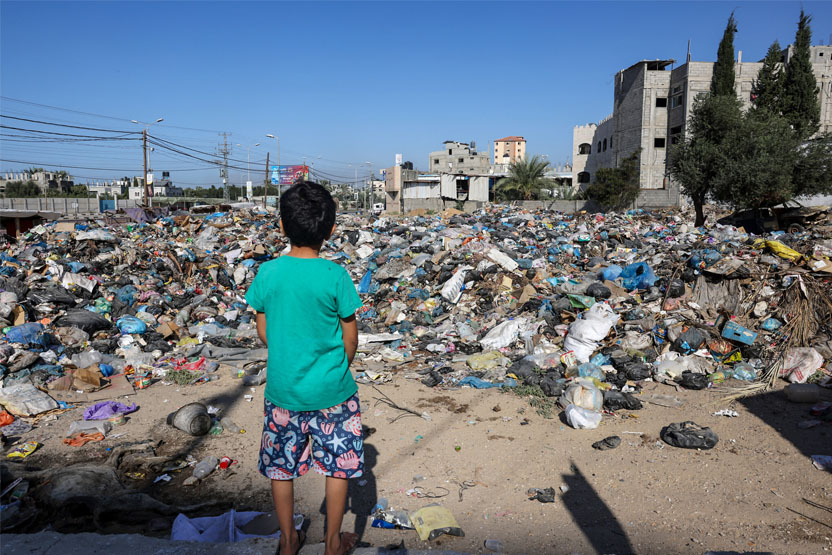
A growing sense of alarm is taking hold across the Gaza Strip as residents confront what experts are calling an environmental disaster that will extend over decades. After two years of Israeli war and systematic destruction, vast amounts of toxic rubble and contaminated debris have become part of daily life for the besieged population.
Recent UN reports revealed shocking figures: 83% of all infrastructure in Gaza has been damaged, including 81,000 housing units in Gaza City alone, while a total of 193,000 buildings have been destroyed or damaged across the Strip.
The volume of rubble exceeds 61.5 million tons, an average of 169 kilograms per square meter, including nearly 4.9 million kilograms of debris contaminated with hazardous substances, according to the United Nations Satellite Centre (UNOSAT).
Engineer Riyad Jneina, Director of the Palestinian Hydrologists Group in Gaza, described these figures as "terrifying for anyone outside Gaza, but a daily reality for its residents who are struggling to survive after two years of war and devastation."
Speaking in a televised interview with Al Jazeera, Jneina warned that the amount of explosives used in Gaza exceeds the power of the bombs dropped on Hiroshima in Japan, cautioning that long-term exposure to these contaminants poses severe health risks, particularly to children and other vulnerable groups.
He added that more than 90% of municipal water networks have been destroyed in some parts of Gaza, while 70% to 75% of currently available water is unfit to meet basic human needs. Contamination risks have soared as families resort to unsafe water sources.
Asbestos: A Silent Killer in the Rubble
One of the most alarming environmental threats is asbestos, a highly toxic material widely used in the roofs of homes built decades ago in Palestinian refugee camps. With the massive destruction of residential buildings, asbestos fibers have now been released into the air and mixed with the war debris.
The World Health Organization (WHO) has warned that all forms of asbestos are carcinogenic, causing fatal diseases including lung cancer, mesothelioma, and asbestosis—particularly when inhaled through dust generated by demolished structures.
Jneina pointed out that asbestos pipes are still used in parts of Gaza’s water supply network, increasing the risk that carcinogenic fibers may enter drinking water and spread cancerous diseases over time.
Earlier this month, the Gaza Government Media Office announced that destruction now affects nearly 90% of the territory, two years after the war began. The death toll has reached 68,527 Palestinians, with 170,395 wounded, most of them children and women. The UN estimates that reconstruction will cost around $70 billion—a figure unattainable under the ongoing blockade and economic collapse.
With millions of tons of debris still covering neighborhoods, agriculture lands, camp streets and schoolyards, residents—especially children—are being forced to live, play, and breathe among toxic remains. Environmental experts warn of long-term cancers, respiratory diseases, immune deficiencies, and genetic damage if urgent international intervention does not begin.


Comment
Reply